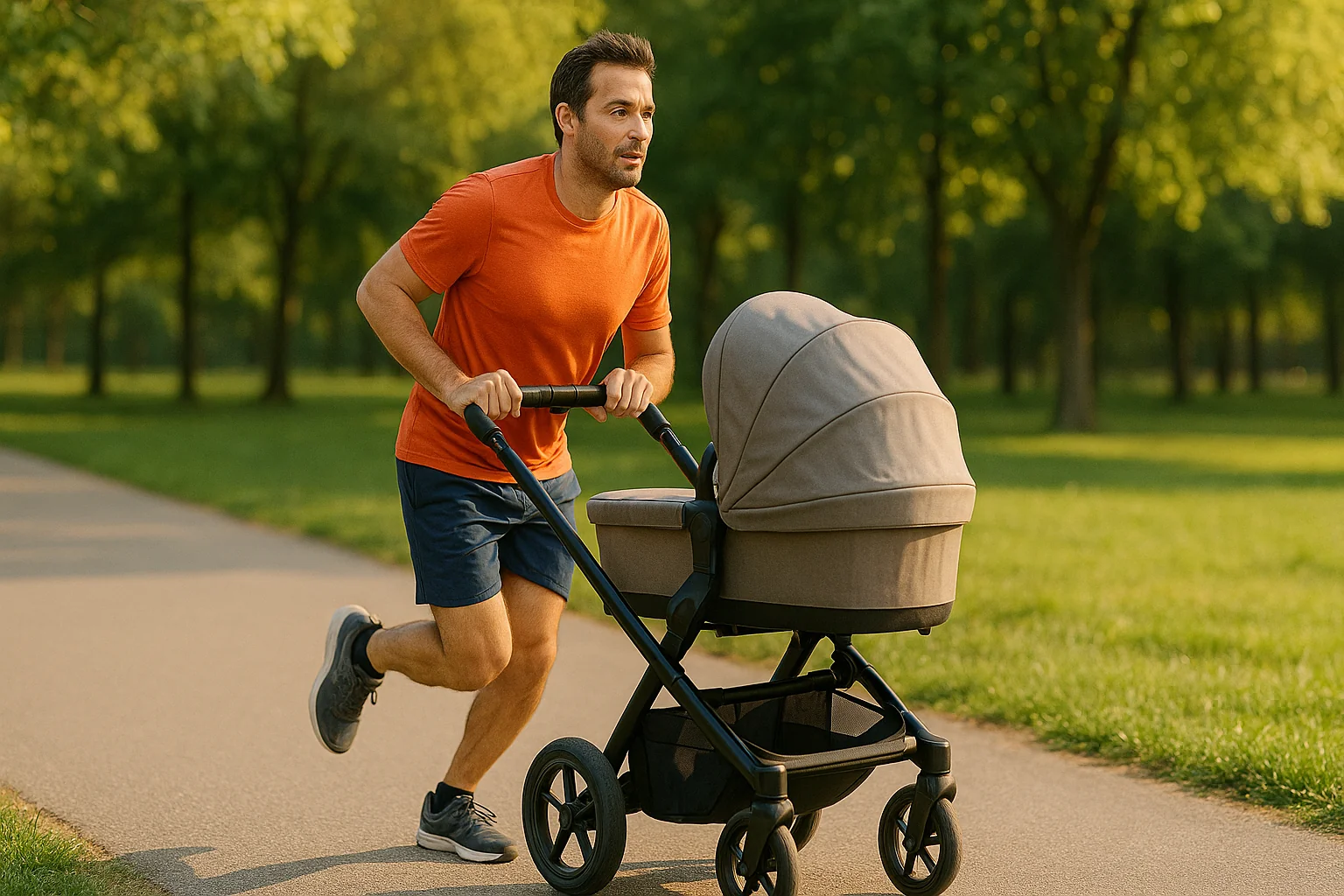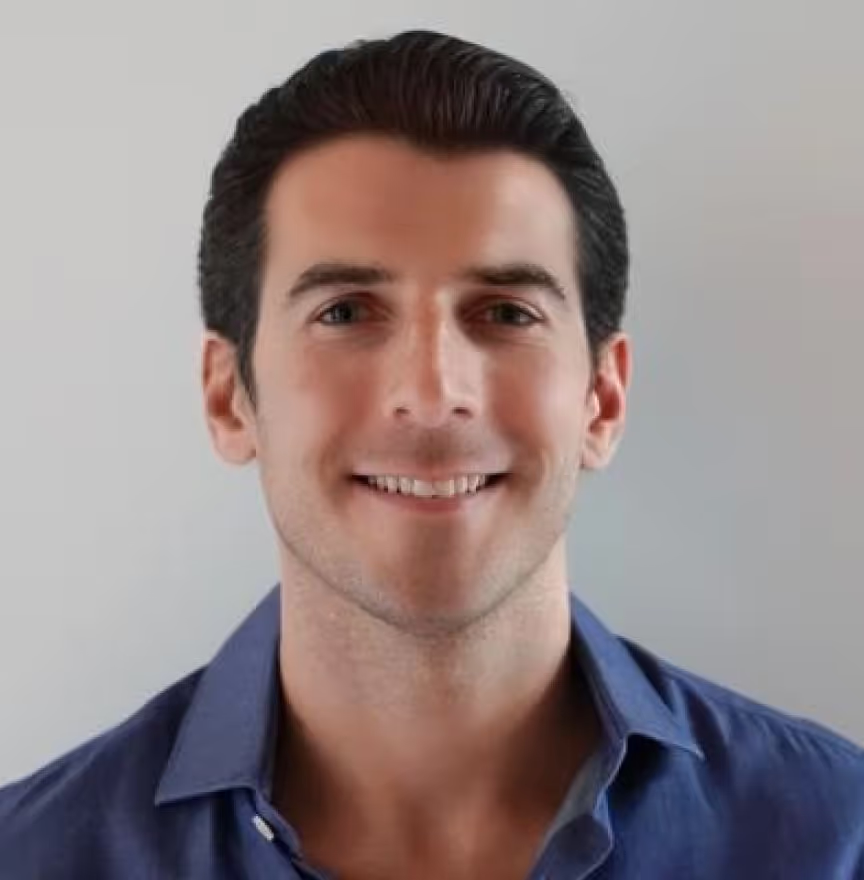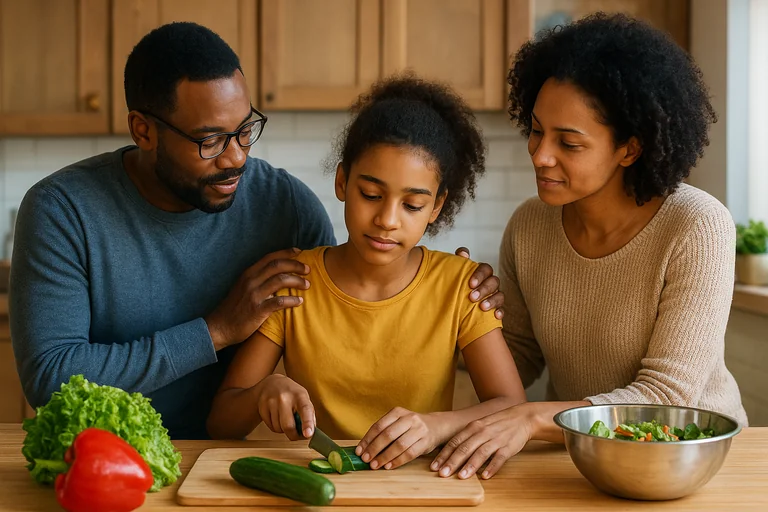A 2 minute assessment to get a personalized mental health or alcohol recovery plan.
Motivation spikes and dips—what actually changes drinking long-term isn't perfect mood or iron will, but simple systems you can run even when energy, stress, or social pressure is working against you.
What You'll Discover:
- Why you can't rely on motivation alone (and what works better)
- Six practical switches you can flip today to make success easier
- A realistic 28-day plan to build momentum
- How to recover quickly after any slip
- When medication like naltrexone makes the difference
- Scripts for handling social pressure without awkwardness
If you've tried to "get motivated" to drink less or quit entirely, only to watch your willpower evaporate by 6 p.m. on Friday, you're not broken—you're human. Motivation naturally spikes and dips throughout the day, week, and month. Expecting it to stay high is like expecting the weather to stay sunny.
The first thing to know is this: you don't need to wait for a surge of motivation. You can create it by making success the easiest option available—over and over. That's what this guide is about.
You'll learn what motivates change in the real world, how to make decisions in advance so you're not white-knuckling in the moment, and how to add proven medical tools like naltrexone that lower the "pull" to drink so your plans actually stick. You'll also find ready-to-use scripts for social situations, a 28-day starter plan, and a fast way to recover after any slip.
Why Quitting or Cutting Back Is Worth It
People usually start for one reason—"I need to get my sleep back"—and stay for ten more: calm mornings, clearer skin, better workouts, stable mood, extra savings, and the quiet confidence of keeping a promise to yourself.
The health case is compelling too. Alcohol affects nearly every organ system, and heavy use raises risks for injury, high blood pressure, multiple types of cancer, liver disease, and depression or anxiety. In the United States, millions of people meet criteria for alcohol use disorder each year—yet most never receive treatment.
If your goal is moderation rather than abstinence, it helps to know what "moderate" actually means. The CDC defines moderate drinking as up to one drink per day for women and two for men—and that's not an average you "save up" for the weekend. For many people, moderation turns out to be harder than abstinence, which is why having the right tools matters.
All that said, motivation becomes much easier when your tools match your goals. FDA-approved medications like naltrexone reduce heavy-drinking days with clinically meaningful effects. That means fewer nights you regret and more days you're proud of—even before your motivation feels perfect.
For a deeper look at what improves when you stop, check out our guide on the incredible benefits of quitting alcohol.
Motivation That Actually Works: Six Switches You Can Flip Today
Think of motivation as something you engineer, not something you feel. These six switches turn hard days into doable ones.
1. Make the Decision Before the Moment
This strategy is called "implementation intentions," and it's backed by decades of research. The idea is simple: write "if-then" rules that remove debate when cravings hit.
Here are examples:
- If it's after work and I want a drink, then I'll walk the dog around the block and make my favorite non-alcoholic drink first.
- If it's a restaurant dinner, then I'll order sparkling water with lime before I look at the menu.
- If someone offers me a drink, then I'll say, "I'm doing a reset—grabbing a zero-proof one."
Keep two or three if-then rules in your phone's Notes app. Rehearse them once in the morning. When the moment arrives, you won't need to decide—you'll just execute the plan you already made when you were thinking clearly.
2. Change the Path of Least Resistance
Motivation naturally follows the easiest option within reach. This is called environment design, and it's one of the most powerful tools for behavior change.
Start here: Move alcohol out of sight or out of the house entirely. Stock three non-alcoholic drinks you actually enjoy, and pre-chill sparkling water so it's ready when you want it. Put your evening "replacement habit" within ten seconds of reach—kettle and herbal tea on the counter, bath salts and towel by the tub, running shoes by the door.
On social nights, buy your first drink on the way in—seltzer with lime—so you start the evening as you plan to continue.
3. Identity First, Behavior Second
This approach is called "identity-based habits," and it works by shifting how you see yourself before trying to change what you do.
Start sentences with "I'm the kind of person who..." and fill in the blank:
- I'm the kind of person who wakes up clear for morning workouts.
- I'm the kind of person who drives friends home safely.
- I'm the kind of person who keeps Friday fun and Saturday productive.
Identity statements shrink the gap between intention and action. Put one on your phone's lock screen this month and watch how it changes your choices.
4. Tiny Wins Compound
Start with the smallest change that will actually move your week forward. This is your Minimum Viable Change.
Examples:
- No alcohol Monday through Thursday.
- Drink only after eating food, never on an empty stomach.
- Two-drink maximum, no shots.
- Alternate every alcoholic drink with a glass of water.
Small, stable wins beat big, brittle rules every time. You can always build from here.
5. Pre-Commit When You're Strong
Make commitments now that protect your future self. This strategy is sometimes called a "Ulysses contract," after the Greek hero who tied himself to his ship's mast so he couldn't succumb to the sirens' song.
Modern examples:
- Tell two friends: "If I text 'tempted,' reply with that GIF we love and ask what non-alcoholic option I'm grabbing."
- Schedule a Saturday morning fitness class you've pre-paid for.
- Order non-alcoholic beverages online to arrive before the weekend.
6. Use Medicine and Skills Together
Motivation stays higher when biology isn't fighting you. This is where medication-assisted treatment makes a real difference.
Naltrexone blunts alcohol's "reward signal" in your brain, which makes stopping at one or two drinks—or skipping altogether—far easier, especially on high-risk nights. Major medical guidelines, including those from the American Psychiatric Association and SAMHSA, recommend medications as first-line treatment for alcohol use disorder.
Pairing medication with brief coaching or group support produces the best results. Neither works as well alone as they do together.
Your Seven-Piece Motivation Toolkit
These are plug-and-play tools you can start using today.
1. Two Scripts for Social Invites
- "I'm doing a 30-day reset—down for food and a walk instead?"
- "I'm driving tonight, but I'd love to catch up. They've got great zero-proof options here."
2. Your Three Non-Negotiables
Write down three simple rules you won't break:
- No alcohol Monday through Thursday.
- If a craving hits, set a 10-minute timer and drink sparkling water while I wait.
- No drinking on an empty stomach, ever.
3. The Craving Surf (10 Minutes)
Set a timer for ten minutes. Name the physical sensations you're feeling—tight jaw, restless legs, racing thoughts. Breathe in a box pattern: four counts in, four counts hold, four counts out, four counts hold. Make a hot drink—tea, coffee, hot cocoa.
When the timer ends, reassess. Most urges crest and fall within minutes, like a wave. You just have to ride it out.
4. The WOOP Card
WOOP stands for Wish, Outcome, Obstacle, Plan. Fill it out for your next high-risk situation:
- Wish: Wake up clear on Saturday morning.
- Outcome: Long run followed by the farmer's market with coffee.
- Obstacle: Friends will order rounds of drinks.
- Plan: I'll start with seltzer and lime, and I'll offer to be the designated driver.
5. The Reward Swap
You're not trying to eliminate the "ahhh" moment—you're finding a new source for it. Try a warm bath with a podcast, a gaming session, crafting, or a short run. Track which swaps actually hit the spot for you. Different people need different rewards.
6. The Accountability Triangle
One friend, one group, one app. That's it. Over-engineering your accountability system collapses compliance. Keep it simple and consistent.
7. Medication Assist
Ask your doctor about naltrexone. You can take 50 mg daily for steady coverage, or use targeted dosing—taking 50 mg about an hour before any planned drinking. This lowers the reward signal during the exact window you need help most.
Your 28-Day Plan to Build Momentum
This plan is simple, realistic, and designed to build on itself week by week.
Week 1: Clear the Runway
Remove alcohol from your house, or at least relocate it out of sight. Stock three favorite non-alcoholic options. Set two if-then rules and write them down.
Choose your lane: complete abstinence this month, or no drinking Monday through Thursday with a two-drink maximum on Friday and Saturday.
If you're using medication, start naltrexone with your clinician's guidance—either daily or targeted dosing.
Week 2: Stabilize Your Evenings
Eat protein and fiber before any social events. Make your first drink at any gathering a non-alcoholic one.
Pick one anchor habit for your evenings: a 9:30 p.m. wind-down routine where you dim the lights, take a warm shower, and put your phone away.
Join one live support group or coaching session for skills and accountability. Just one—don't overdo it.
Week 3: Stress-Proof Your Plan
Identify three stress triggers that make you want to drink, and pre-solve them with alternatives: a walk, a bath, journaling, or a 10-minute room tidy.
Add one social activity that doesn't involve alcohol: a brunch hike, bowling, board game night, or visiting a mocktail bar.
If cravings are spiking, schedule a daily 10-minute "urge surf" window right after work when you're most vulnerable.
Week 4: Lock in Your Gains and Look Ahead
Decide your plan for month two: Will you extend the same rules, or level up to something more challenging?
Book two weekend morning activities—a fitness class, a long run, the farmer's market—that require feeling good. This creates a built-in incentive to protect your Friday and Saturday nights.
Celebrate the most boring, beautiful metrics: fewer heavy-drinking days, better sleep, calmer mornings. These matter more than perfect streaks.
With that in mind, motivation skyrockets when you track wins that actually matter to you personally: money saved, steps walked, workouts completed, focused work hours, or simply "calm mornings" marked on your calendar.
When Motivation Dips: A Five-Minute Rescue Drill
Even with systems in place, you'll hit moments when motivation crashes. Here's your rescue protocol:
1. Name the moment. Say out loud or write down: "I'm at a 7 out of 10 urge because I'm stressed and hungry."
2. Change your physical state. Eat a protein snack, drink a full glass of water, then step outside for two minutes of fresh air.
3. Run one if-then rule. "If I still want it after my hot tea, I'll decide then."
4. Ping your accountability triangle. Send a three-word text to your buddy: "Urge at 7."
5. Shrink your goal. Instead of "I won't drink tonight," try "No alcohol for the next 10 minutes." Reset the timer as many times as needed.
Motivation often returns once your body and brain get a tiny pause from the immediate craving.
What If I Slip?
A slip is not a moral failure—it's data. Run the R.A.P.I.D. reset:
Review: What exact chain of events led here? (Example: I was hungry, had an argument with my partner, and had no non-alcoholic options in the house.)
Adjust: Name one small change you'll make next time. (Example: I'll keep three cans of seltzer in the fridge at all times.)
Protect: Tonight ends with water and bed. No "what the hell" spiral where you drink more just because you already slipped.
Inform: Tell your accountability triangle one fact and one plan. (Example: "Slipped tonight. Tomorrow I'm back to my normal rules.")
Do: Take a 10-minute walk or shower right now. Tomorrow, you return to your normal routine as if nothing happened.
The goal isn't a perfect streak—it's minimizing the distance between a slip and your next good choice.
You Can't Rely on Motivation (And That's Good News)
So, what should you rely on instead? Use better levers—the ones with the strongest evidence base.
Medication-assisted treatment for alcohol use disorder is recommended as first-line treatment in major medical guidelines. Medications like naltrexone reduce heavy drinking by making alcohol less rewarding. You're using biology to lower the slope of the hill you're climbing.
Brief, skills-based support like group meetings or coaching improves both adherence to medication and overall outcomes. The key word is "brief"—you don't need intensive therapy. Keep it light and consistent.
Environment and routines beat raw willpower every time. You're not fighting cravings minute by minute—you're designing a default setting that doesn't require constant decisions.
For more context on how alcohol use disorder exists on a spectrum (not as a simple label), read our guide on understanding alcohol use disorder.
Common Questions About Quitting or Cutting Back
Do I have to quit forever to be successful?
No. Some people choose complete abstinence, and others start with "alcohol-free weekdays" or a "two-drink maximum" and keep adjusting from there. What matters most is reducing heavy-drinking days and building a life you genuinely like more.
What if my friends push back?
Use a short script plus a quick redirect: "I'm on a reset—trying out the zero-proof list tonight. How's your marathon training going?" Most people will follow your conversational lead and drop the topic.
How do I handle weekends?
Pre-commit to something on Saturday or Sunday morning that you'll actually look forward to—a long run, a hike, brunch with a friend. Order non-alcoholic options online ahead of time. Text your accountability buddy at 5 p.m. on Friday with your specific plan for the evening.
Will medication "fix" my motivation?
Medication won't replace skills and strategies, but it can significantly lower cravings and reduce the reward you get from drinking. This makes your plan much easier to follow, especially during those 6 to 9 p.m. danger windows when willpower tends to fail.
Is it safe to stop drinking suddenly?
If you've been drinking heavily every day for an extended period, talk to a clinician before stopping abruptly. Alcohol withdrawal can be serious and even dangerous in some cases. Medical guidance keeps you safe. Telehealth providers can screen you quickly and advise on the safest approach.
A Kinder Way to Measure Progress
Instead of judging yourself by a perfect streak, try the four-number check-in each week:
- Total drinking days
- Heavy-drinking days (five or more drinks for men, four or more for women)
- Alcohol-free days
- Mornings you woke up feeling clear
Celebrate any improvement in numbers two and four. Those are the metrics that actually move the needle for both health and quality of life.
Perfect streaks look good on paper, but real progress is messier and more sustainable. A bad Friday followed by four good days is still a huge win.
Bringing It All Together
Motivation will never be perfectly constant. The trick is to stop depending on it entirely.
Make decisions in advance using if-then rules. Change your environment so the easy choice becomes the right choice. Use medication to reduce the biological pull toward drinking. Build two or three tiny routines that deliver the feeling you were originally seeking from that first drink.
Then keep going, one day at a time, one system at a time.
If you want a low-pressure way to see whether naltrexone plus telehealth support could fit your goals—whether that's abstinence or moderation—a short confidential assessment can map your options and help you design your first month.
References
- NIAAA: Alcohol use disorder prevalence and statistics
- CDC: Moderate drinking guidelines
- JAMA: Medications for alcohol use disorder—systematic review and meta-analysis
- APA: Practice guideline for pharmacological treatment of alcohol use disorder
- SAMHSA: Medication for the treatment of alcohol use disorder—brief guide




